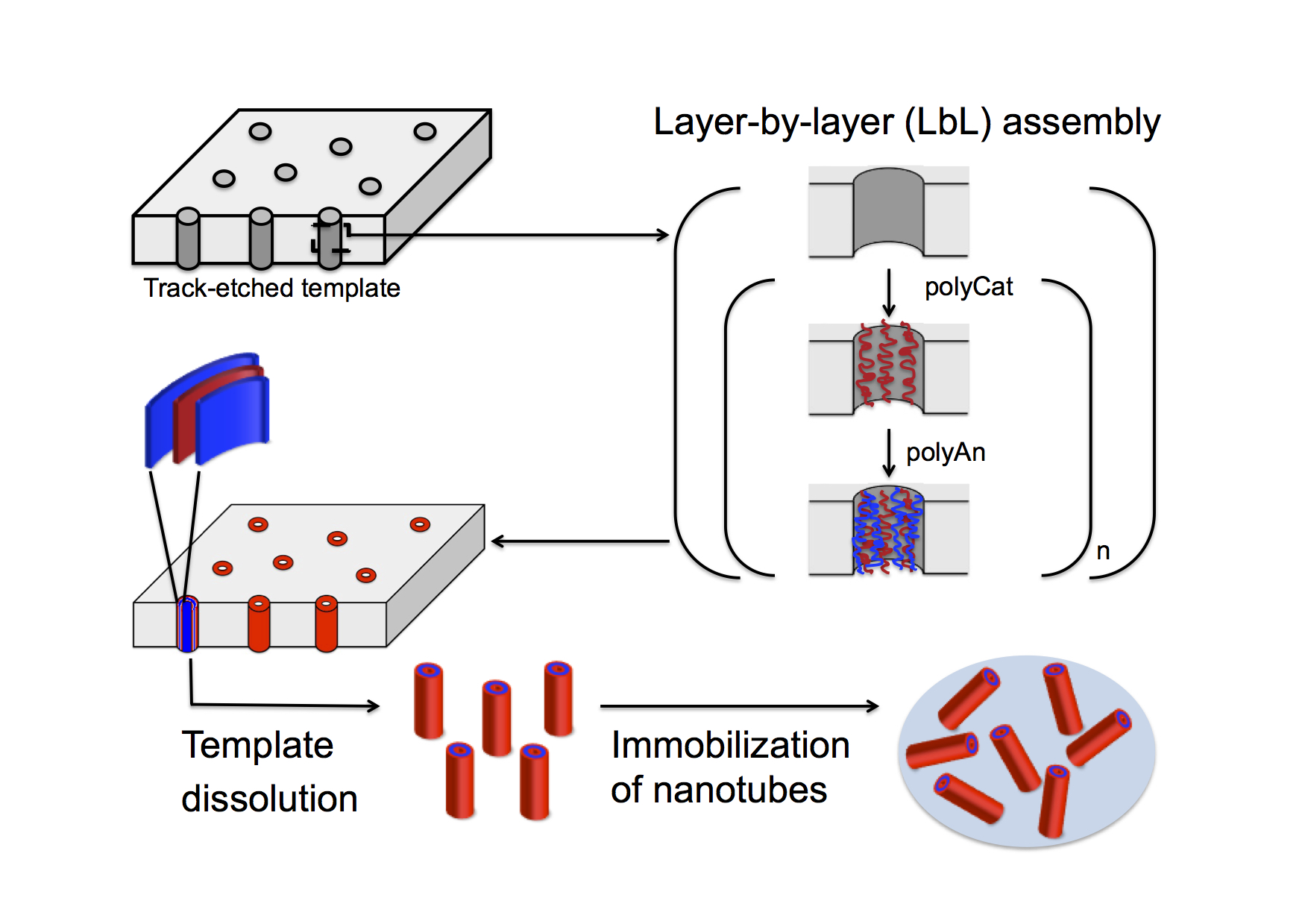Design of stimuli-responsive surfaces through layer-by-layer assembly for biomedical application
The design of extracellular matrix (ECM) mimics is a challenging task in tissue engineering and related fields owing to its complexity in terms of structure and biochemical signaling.1 Indeed, ECM is a dynamic and physiologically active matrix which response to physicochemical and biochemical changes of the surrounding environment. It exhibits a complex organization (both at micro and nano scales) that provides a mechanical support and insures communications between cells.2 The synthesis of ECM bioinspired three dimensional structures may thus be relevant to create functional interfaces which are able to response to changes in the media (pH, T, I, etc). In this regard, we target to synthesize smart nanotubes using layer-by-layer (LbL) assembly and create an interface that mimic the 3D organization of ECM.

Figure 1. Combination of nanotempates and layer-by-layer assembly approaches
[1] T. Lu, Y. Li, and T. Chen, Int J. Nanomedicine, 2013, 8, 337
[2] C. J. Roy, C. Dupont-Gillain, S. Demoustier-Champagne, A.M. Jonas, J. Landoulsi, Langmuir, 2010, 5, 3350